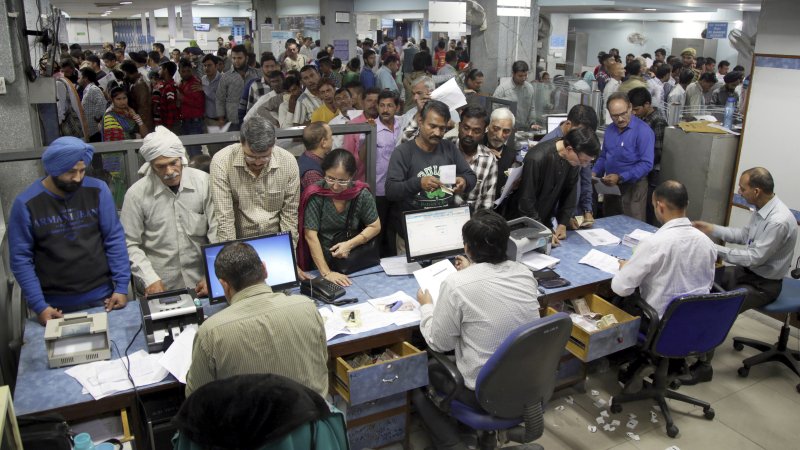Millions of people in India continued to form long lines at banks and ATMs as they frantically attempted to exchange their old 500 and 1,000 rupee banknotes after the government removed them from circulation to fight corruption and counterfeiting. About half of the country's 202,000 ATMs were shut down on Friday and new 500 and 2,000 rupee notes quickly disappeared as police received more than 3,000 calls reporting fights in the long lines.
Photo by Jaipal Singh/European Press Agency
NEW DELHI, Nov. 12 (UPI) -- Millions of people in India rushed to banks and ATMs after the country pulled all of its 500 and 1,000 rupee notes out of circulation.
Reports of violence emerged as residents of India attempted to swap out the bills which the government deemed worthless in an attempt to fight black market and counterfeit currency.
Officials received more than 3,000 calls reporting fights in Delhi between Friday and Saturday as people scrambled to replace the old notes, according to Sky News.
About half of the country's 202,000 ATMs were shut down on Friday and new 500 and 2,000 rupee notes rapidly disappeared from those that remained open.
Finance Minister Arun Jaitley said it would take weeks for the banks and ATMs to completely replace the old notes and encouraged people to remain patient, according to the BBC.
People continued to panic, as residents were limited to exchanging a maximum 4,000 rupees per head each day in advance of the Dec. 30 deadline.
The old 500 and 1,000 accounted for nearly 85 percent of the currency in circulation leaving many people, especially the rural and urban poor, without cash.
Brahma Reddy, assistant professor with the Department of Economics at the University of Delhi, said the change would ultimately yield positive results once the frenzy subsided.
"In the next two weeks, there will be some inconvenience," he said. "But this is going to have a very good, positive effect on the economy overall."
Prime Minister Narendra Modi said the move had to be done in secret despite the negative effect on the public.
"It had to be done suddenly but I never thought I will receive blessings for this," he said/
He added that more anti-corruption measures could follow in the new year and while "no one would be spared" in the fight against counterfeiting "honest people will not face any problem."















